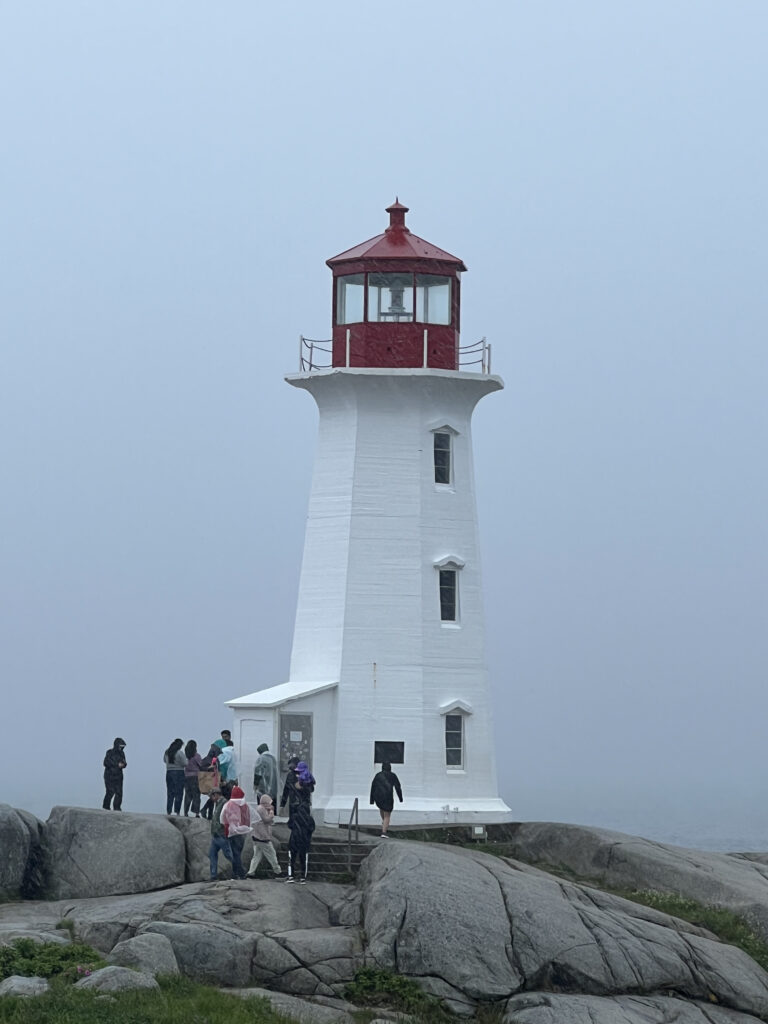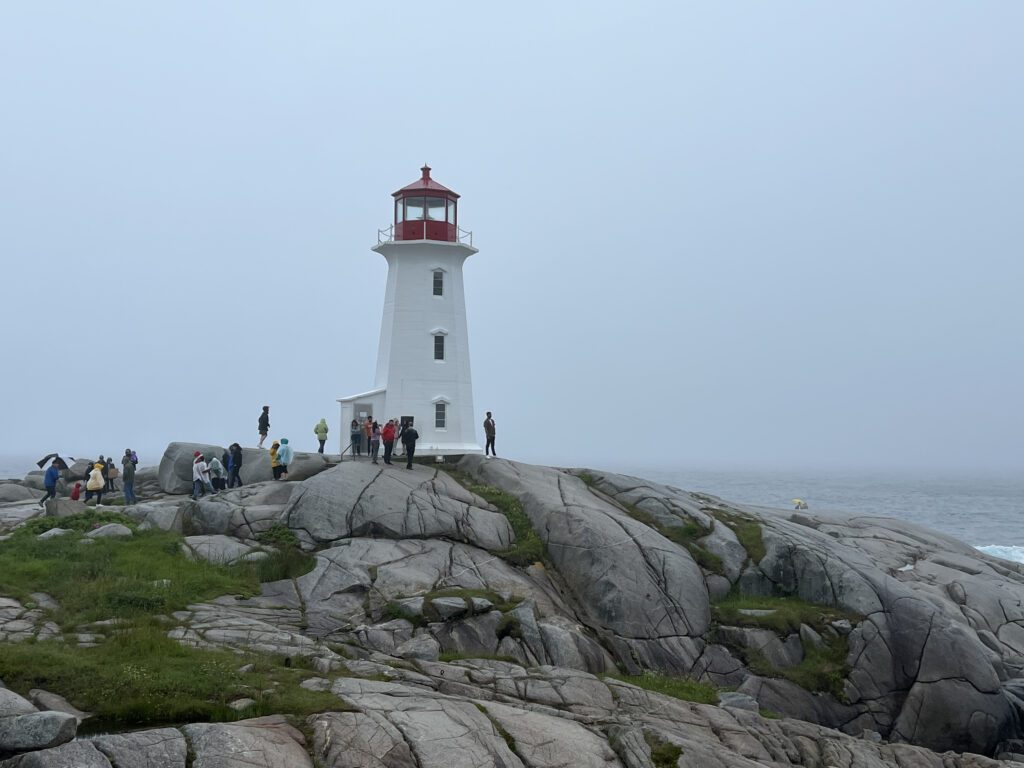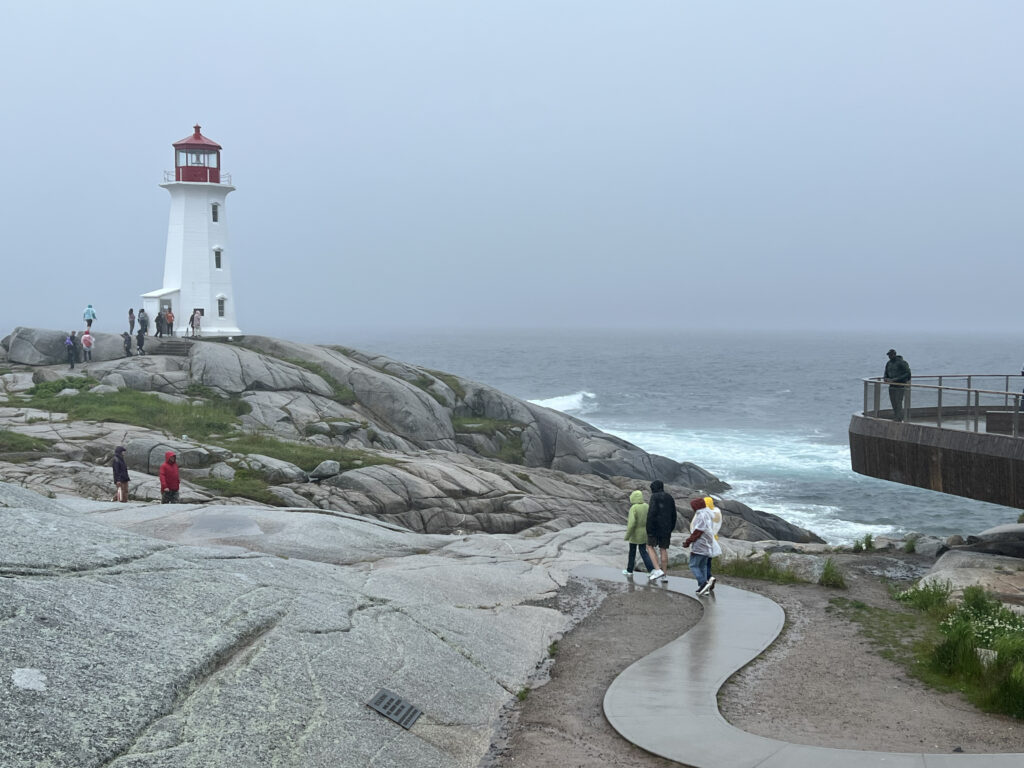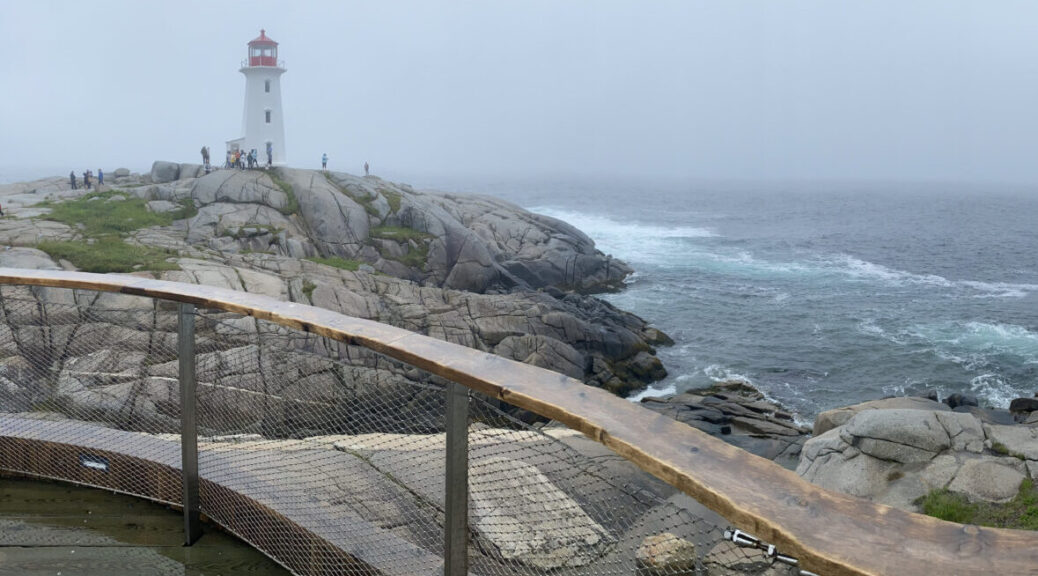
Fishing Villages and Peggy’s Cove
We also explored a few sites near Halifax. We first headed to Lunenburg by way of Mahone Bay. The town of Mahone Bay has just over 1,000 people. It is a fishing village and a well-known tourist destination. Pictures of three churches along the bay, similar to the one below, are popular photographs on postcards. We also saw colorful homes. The paint used for these homes may have been left from the paint families used for their fishing boats.
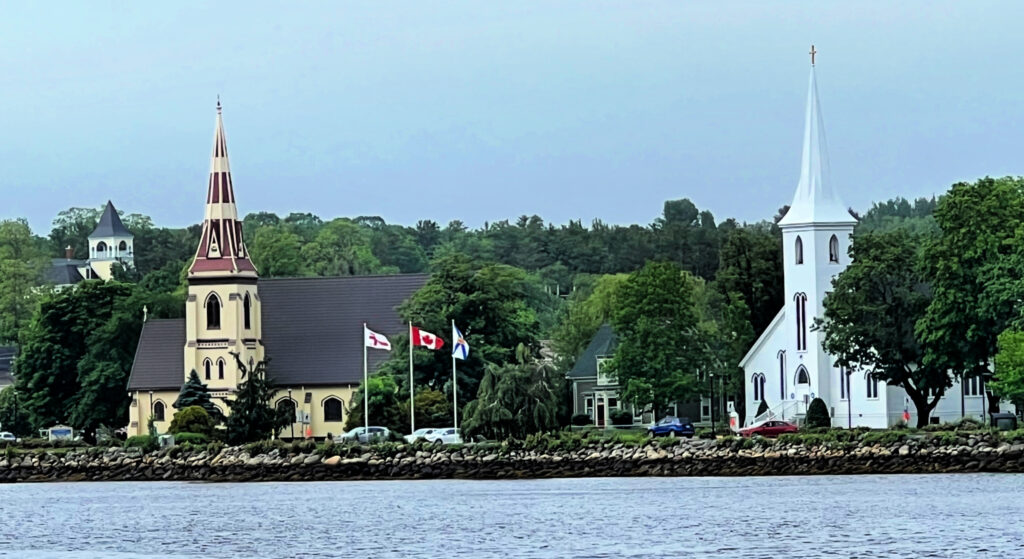
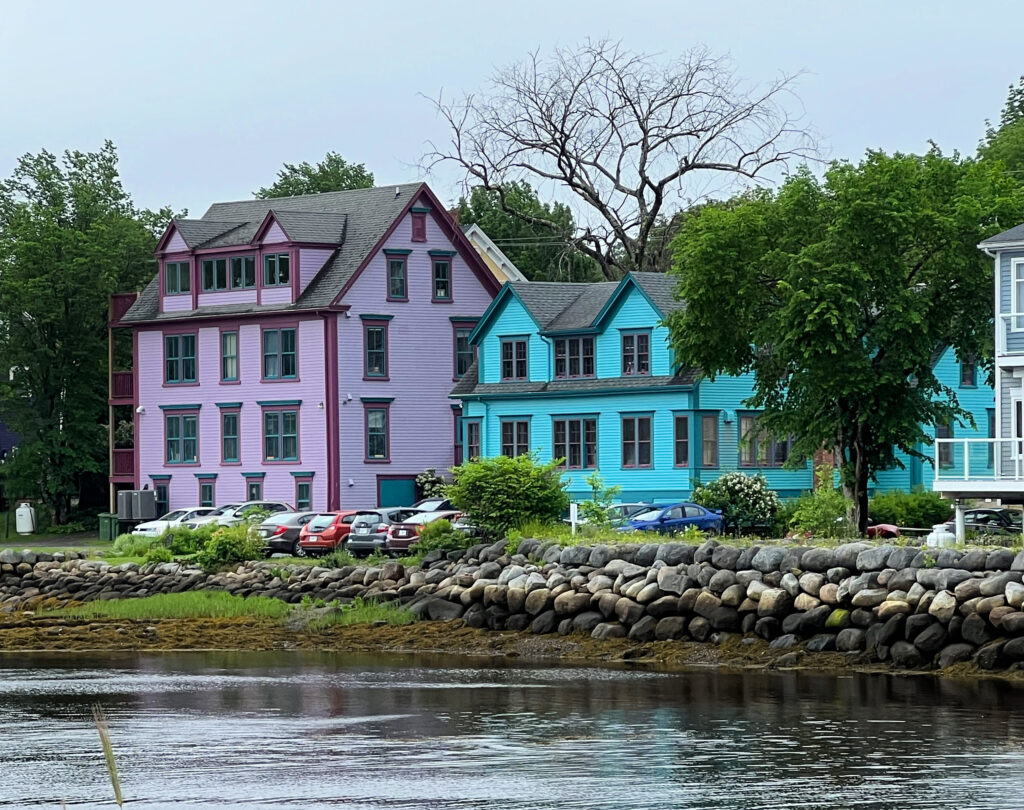
We next went to Lunenburg where we would explore the small fishing village. We exited our bus near the Lunenburg Academy. This is a historic building currently owned by the Town of Lunenburg. Although there are tenants who pay rent, the town has explored selling the building because of the expense involved in maintaining it. The Academy certainly has significant historical value as described below.
Known as “the Castle on the Hill”, this iconic landmark in Old Town Lunenburg UNESCO World Heritage Site, was designed by New Brunswick architect H.H. Mott in 1893 in a time of transition from one-room schoolhouses to public educational buildings. Designated a National Historic Site, the Lunenburg Academy operated as a public school for grades primary to nine from 1895 until 2012, and remains the only surviving, intact 19th century academy building in Nova Scotia and one of very few in Canada.
https://www.novascotia.com/see-do/attractions/lunenburg-academy-national-historic-site/8099
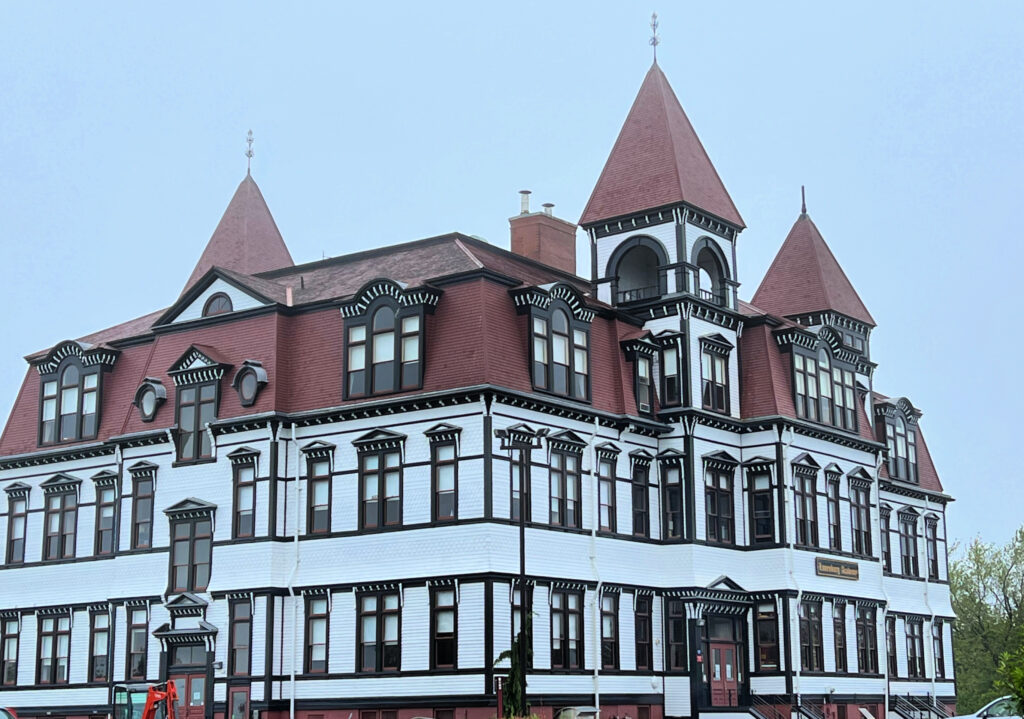
After learning about the Academy, we walked through the town. We first came to St. John’s Anglican Church. Built in 1753, it is the second oldest Church of England in Nova Scotia and the second oldest continuous operating Protestant church in Canada.
Our local guide did not have a key to the church so we were only able to view it from outside. I was disappointed, but even more so after learning about a 2001 fire and the subsequent restoration process. In 2004, while repair work in the church was continuing after the fire, workers found that part of the ceiling had been previously decorated with stars. A decision was made to contact Astronomer David Turner from St. Mary’s University in Halifax. They asked him to determine if the star pattern was random or had any significance. Turner had done planetarium shows in the past so used software to discover if, where and when such a star pattern might have occurred.
After trying a few different scenarios, Turner discovered the ceiling pattern matched the night sky as seen about 2,000 years ago. Most likely, he surmises, the original artists wanted to show how the night sky would have appeared at the time traditionally associated with the birth of Jesus. Turner first checked how the sky would have appeared as seen from Bethlehem, but the orientation wasn’t quite correct. Setting the location for Lunenburg, however, gave a match…
Turner gave the star patterns to the artists restoring the church. After painting the ceiling boards a deep blue, they painstakingly added the stars in gold leaf. “It’s spectacular now,” Turner says. The star-studded ceiling is “the first thing you notice when you walk into the church.”
https://www.astronomy.com/science/ancient-stars-shine-on/
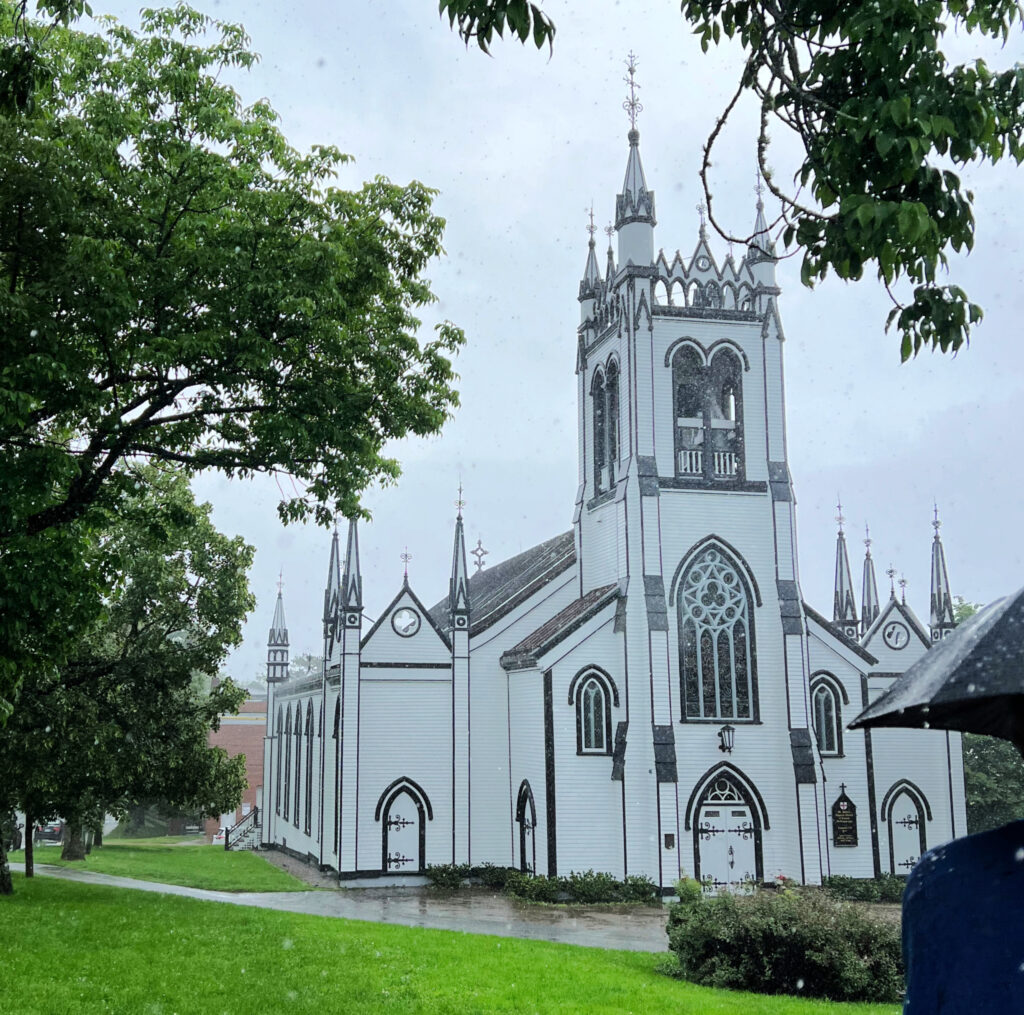
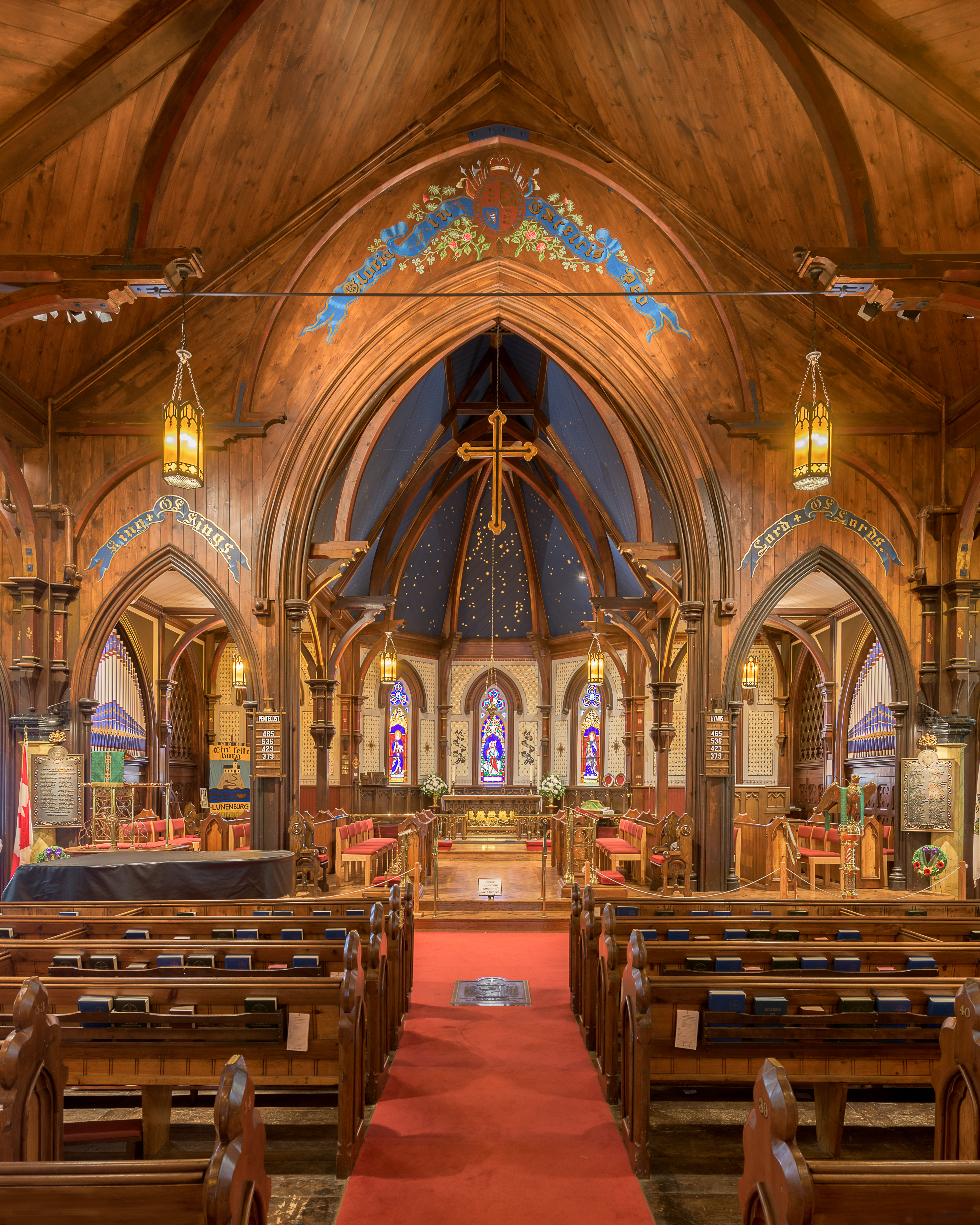
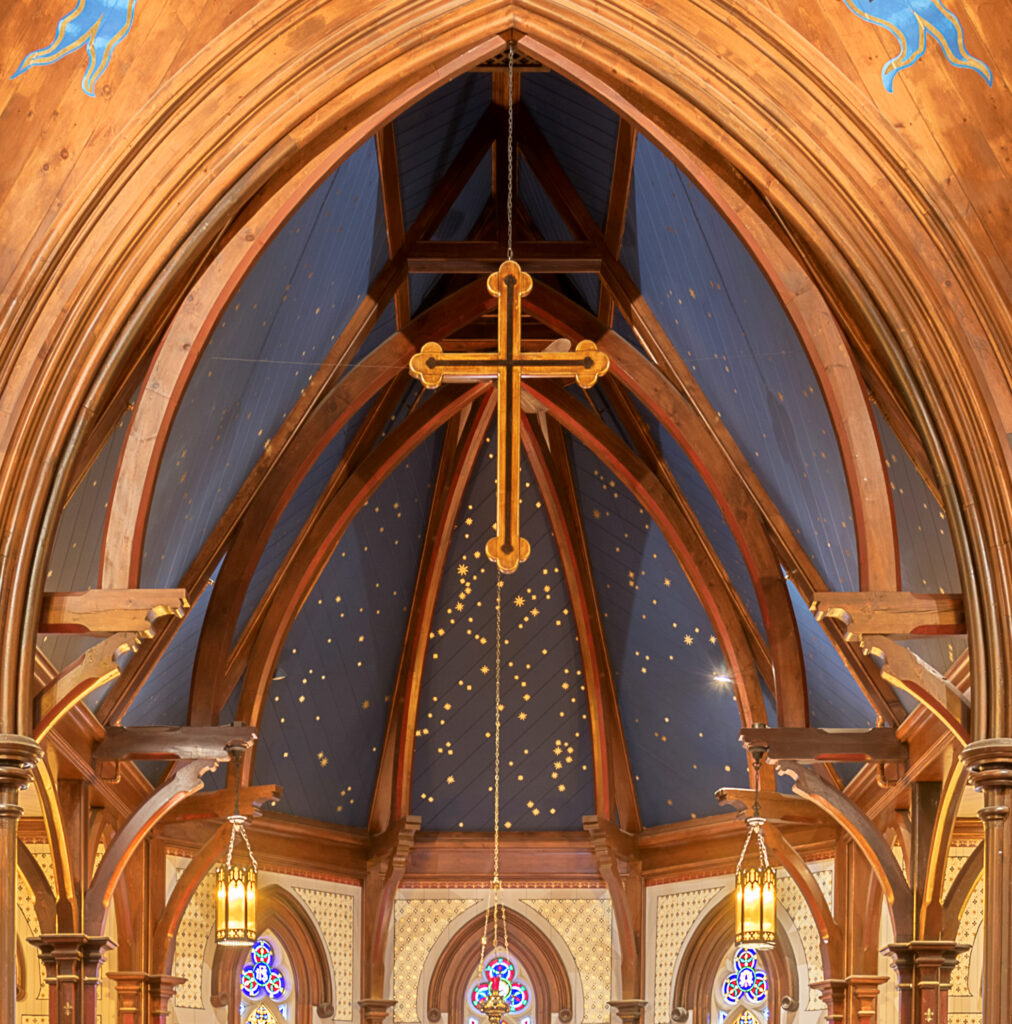
We then walked to the harbor area. The first picture below is a home about a block from the harbor. Like the homes we saw in Mahone Bay, it was likely painted with paint left over from painting the family’s fishing boat. The house has a dormer at the top with a view of the harbor. From here, a wife might watch for the return of her husband from fishing. They are sometimes called widow windows because sadly, some husbands never return.
The boats in the second picture are called dorys. They are commonly used by fishermen in the Maritimes and in New England. It was common for family members to fish together. The third picture is one of several monuments near the harbor with the names of fishermen lost at sea. Several last names are the same – Mason on the section of the monument pictured – suggesting men from the same family were lost. It is now illegal for more than two people from the same family to be on the same fishing boat.
The last two pictures are from exhibits at the Fisheries Museum of the Atlantic. Fishing (and tourism) are the lifeblood of Lunenburg.
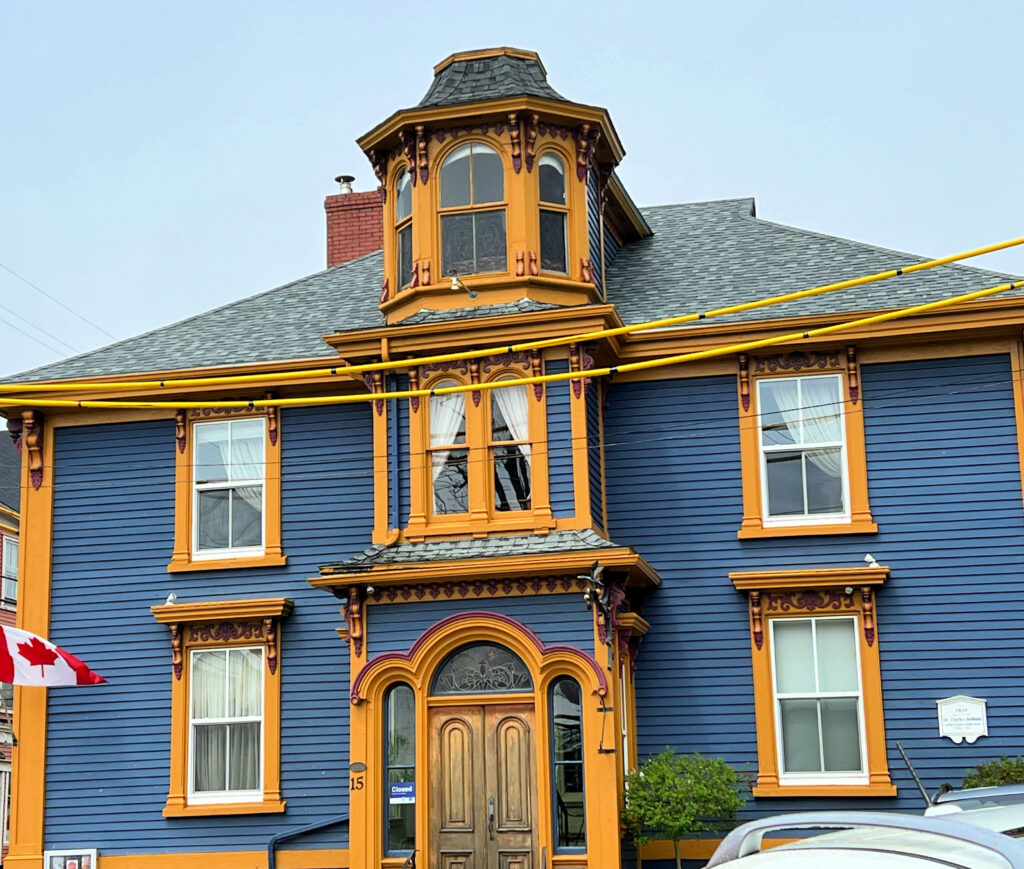
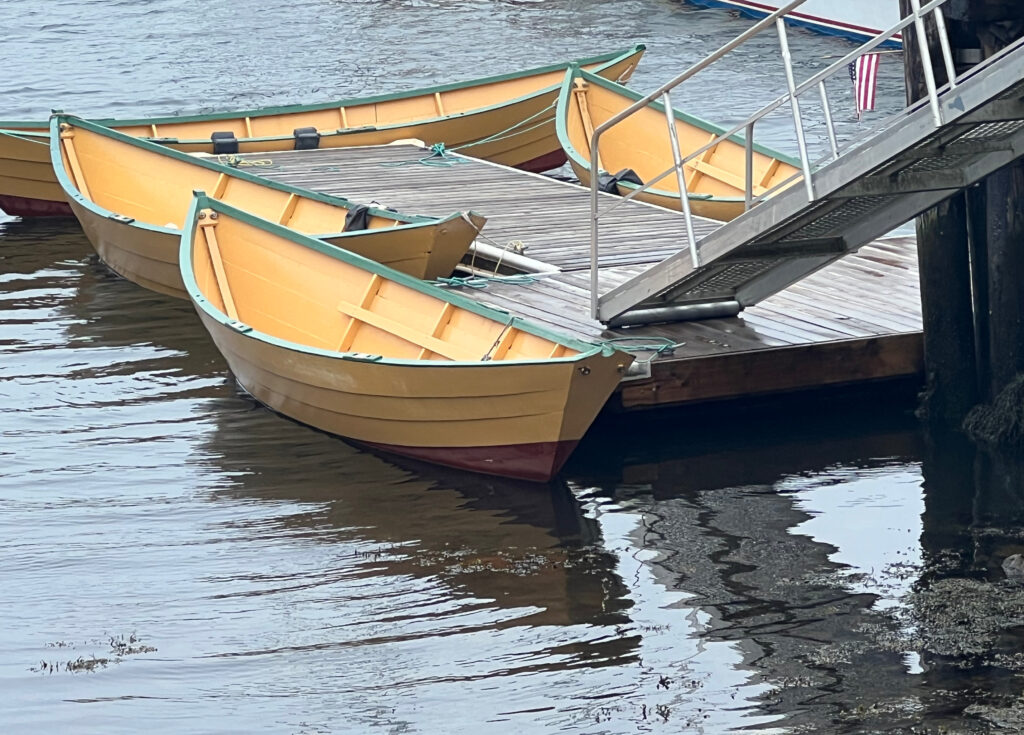
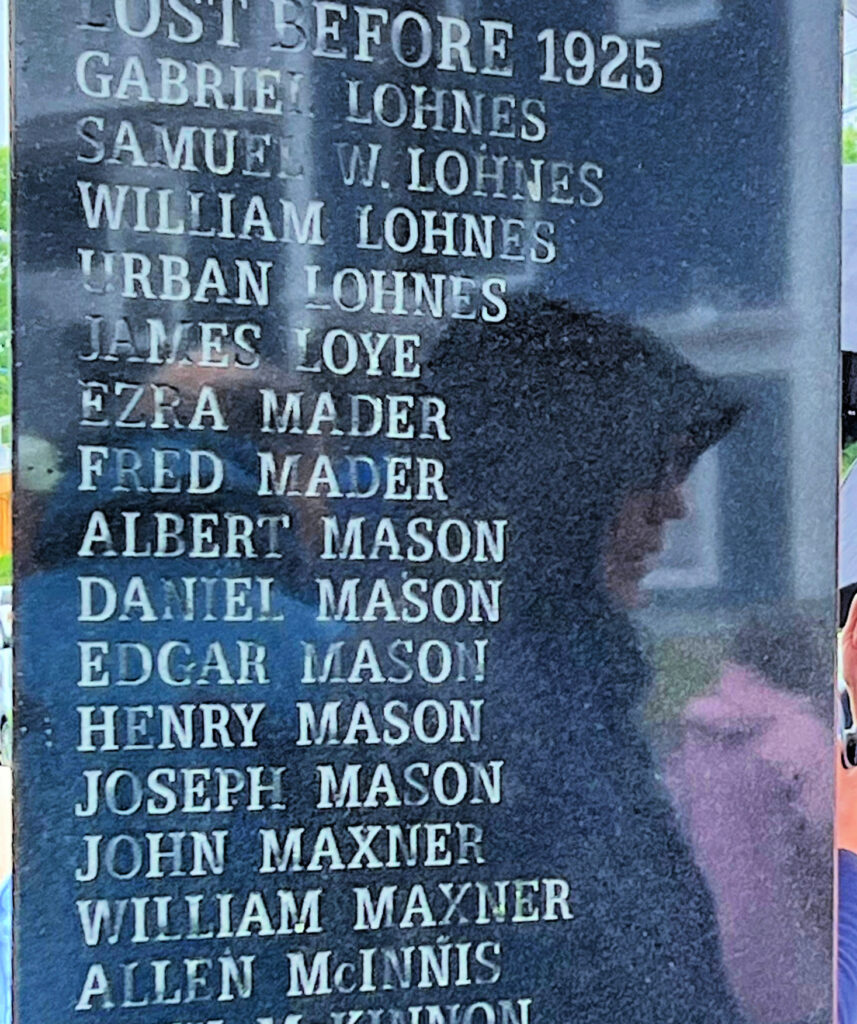
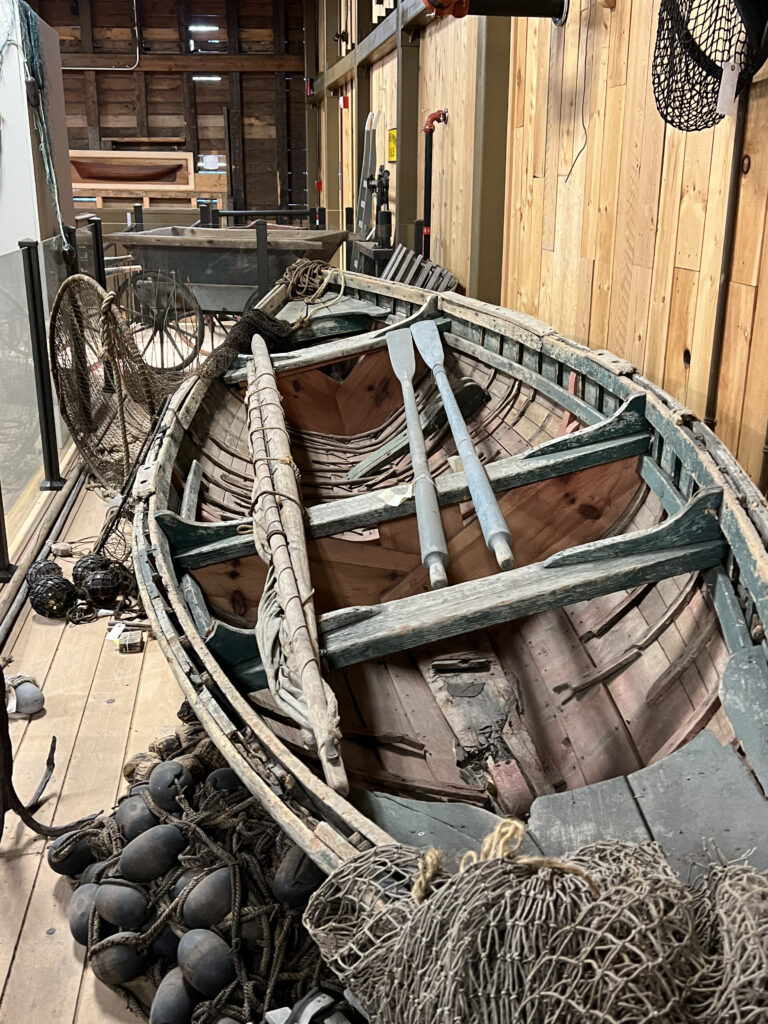
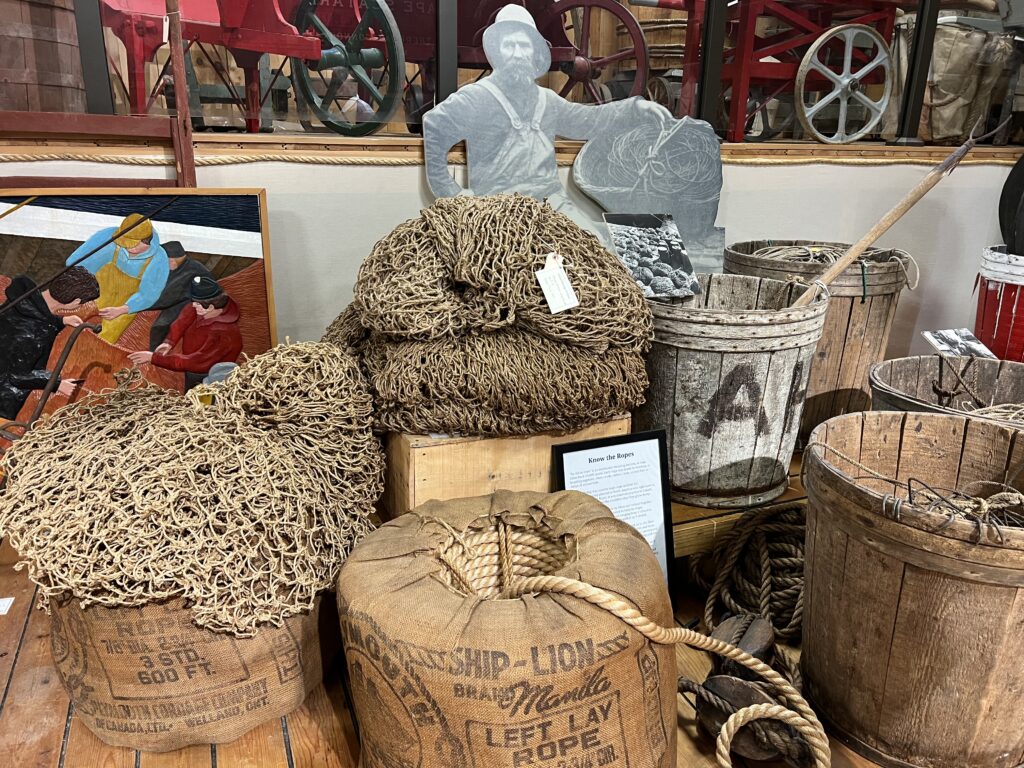
On another day, we visited Peggy’s Cove which lies by St. Margaret’s Bay. It is a fishing village with only 30 permanent (year around) residents. Nova Scotia is home to over 160 historic lighthouses. The Peggy’s Cove Lighthouse pictured below is one of the most well-known and photographed lighthouses in Canada.
The first lighthouse at Peggy’s Cove was built in 1868 and was a wooden house with a beacon on the roof. At sundown, the keeper lit a kerosene oil lamp magnified by a reflector creating a red beacon light. It marked the entrance to St. Margaret’s Bay. That lighthouse was replaced by the current one, built in 1914. It is made of reinforced concrete but like the earlier wooden one, has an eight-sided shape. It was automated in 1958. The viewing deck was added in 2021 and is an important safety feature as rogue waves have sometimes swept tourists off the rocks.
